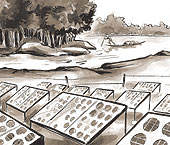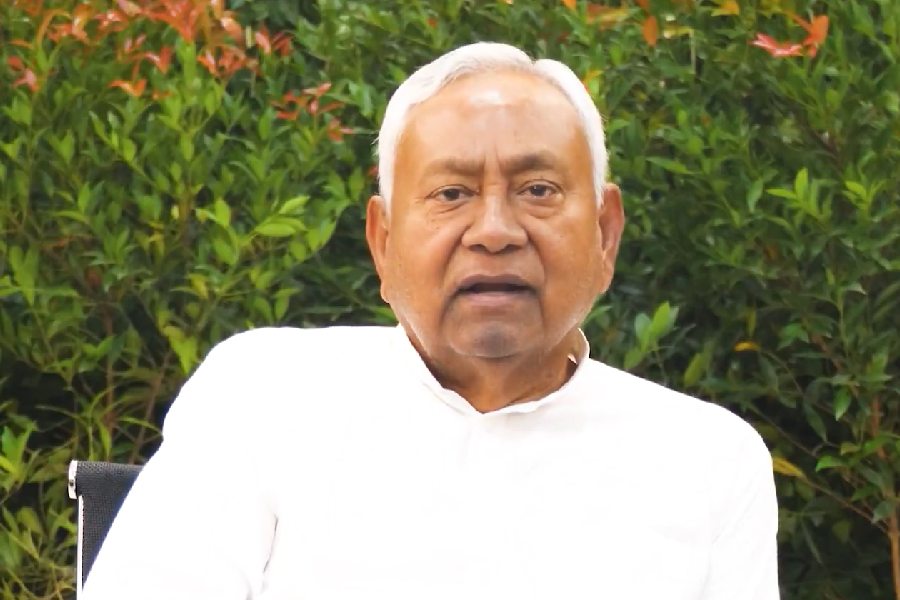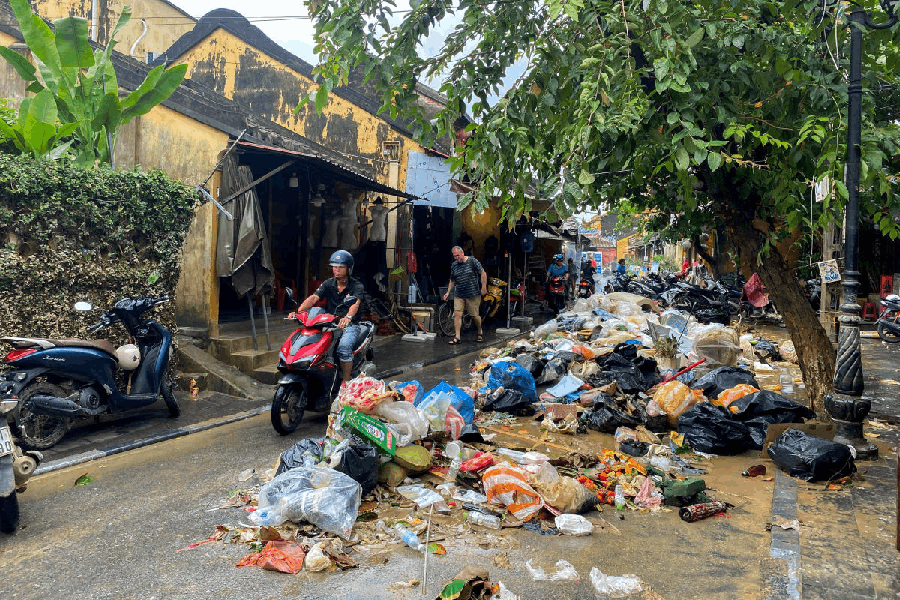 |
| Illustration: Suman Chowdhury |
For Niranjan Giri, life ebbs and flows with the rhythms of the tide country. Giri is a boatman in the Sundarbans, the generic majhi for the people of Rakhalpur, whom he ferries back and forth from the village ghat. Hemmed in on all sides by the swirling waters surrounding the Gangetic delta, Rakhalpur is a village on the island of L-Plot in the Patharpratima block.
Giri hardly, if ever, has it easy. There are many things he has to keep in mind ? the timing of the tides, the possibility of storms and how much load his vessel is carrying. And it is on boatmen like Giri that the people depend on for survival.
From the mainland, Rakhalpur is about one-and-a-half hours by bhutbhuti, the onomatopoeic name given to the motorised boat of the Sundarbans. The boats serve as a lifeline, bringing in supplies, medicines and other essentials to the island. But even in this heart of the tide country, life has changed swiftly over the past month. Take, for example, the single lamp-post that stands at the head of the ghat. It runs on solar power and every evening, from dusk to midnight, throws a circle of light on the gloomy waters, helping boatmen like 30-year-old Giri row their dinghies safely to and fro.
Miles away from the reach of main grid power because of the rivers separating them, Rakhalpur is part of a grand plan that aims to bring alternative energy to all 53 inhabited islands of the Sundarbans by 2010.
Sitting far away in Calcutta, S.P. Gon Chaudhuri nurses it as his dream project. “Once completed, it will be an international demonstration project with the highest concentration of renewable energy users in the world in an off-grid area,” says the director of West Bengal Renewable Energy Development Agency (WBREDA), which is in charge of the scheme.
If the project is a grand one, plans for the Rs 300-crore scheme are appropriately magnificent. Each island will have its own rural energy society, which will settle the all-important matter of tariff and handle distribution of power at the micro-level. In short, a plan for sustained regeneration where the villagers, literally, have the power in their hands.
At Rakhalpur, which got solar power in mid-April, the benefits are already becoming apparent. The traditional village economy used to draw upon agriculture and on breeding livestock and catching meen (tiger-prawn hatchlings), for subsistence. But now, with uninterrupted solar lighting in over 50 shops, the Rakhalpur market has become the centre of new activity. The village has one of the biggest markets on the island, and the brighter lights every evening mean more curious people, more hours of business ? and of course, better trade.
Mita Poira, the local panchayat pradhan, assures us that the ancillary benefits of the project are just round the corner. The village will soon procure machines to de-husk rice and grind spices, and plans are afoot to set up a photocopier in the market. The local carpenters can look forward to electric tools to improve their craft. Telephone booths and fridges dot the shopfronts and there is an increased clamour for DTH cable TV connections. Starry-eyed villagers also hope that video parlours will soon run late into the night.
No one knows how the village has changed better than Monika Das, who has spent over 30 years of her life in Rakhalpur. “Earlier, the village would get flooded almost every year in the monsoons. There were no roads and doctors never came here,” she remembers. But then she donated the huge plot of land on which the solar plant has been set up. And resourceful villagers are already making full use of it ? a local lad wants to utilise the refrigeration facilities at the plant to make ice lollies, which go by the name of ‘Pepsi’ locally and have a huge market in the summer months.
But for Giri, all that matters right now is the light that stands at the ghat every evening to guide him home.











